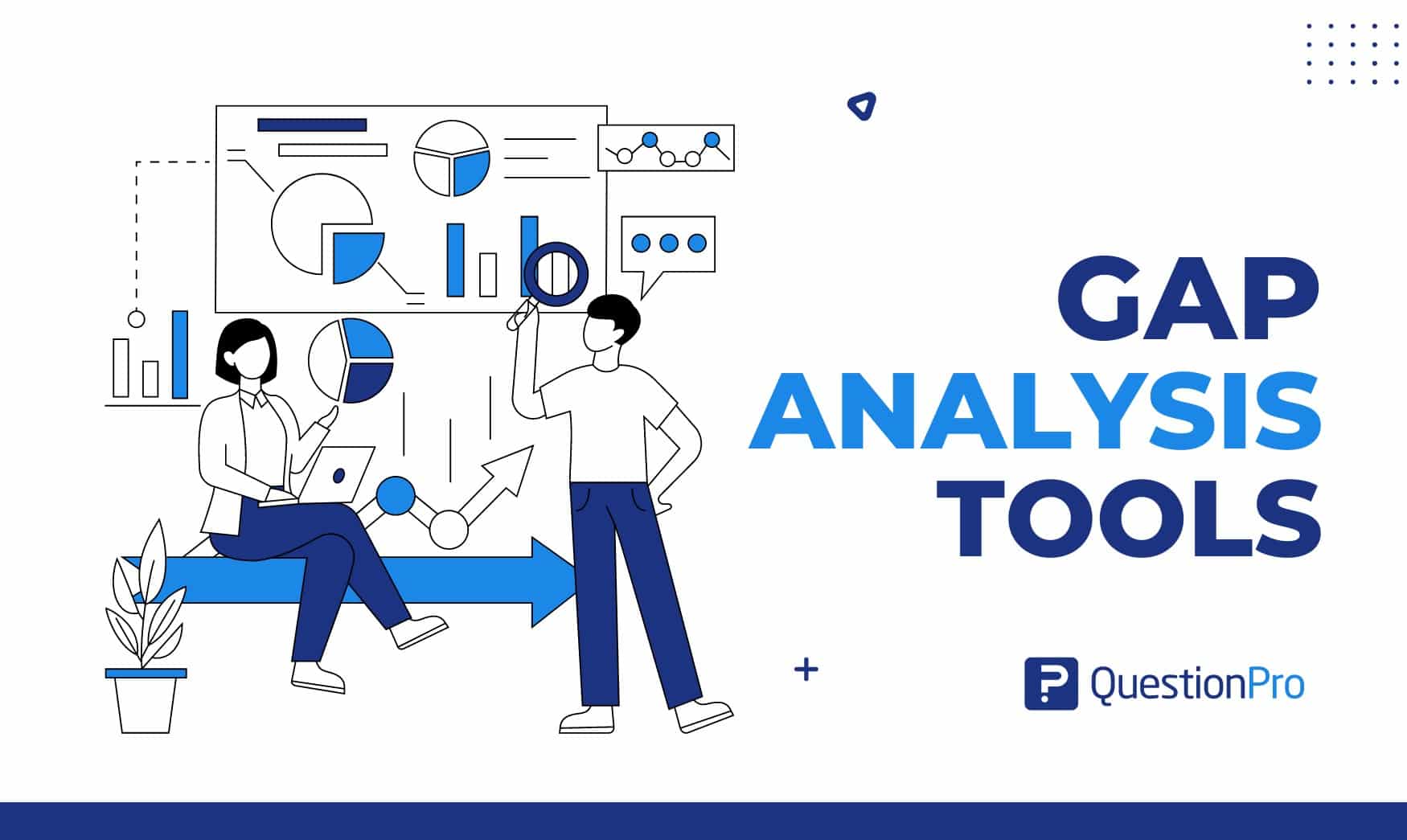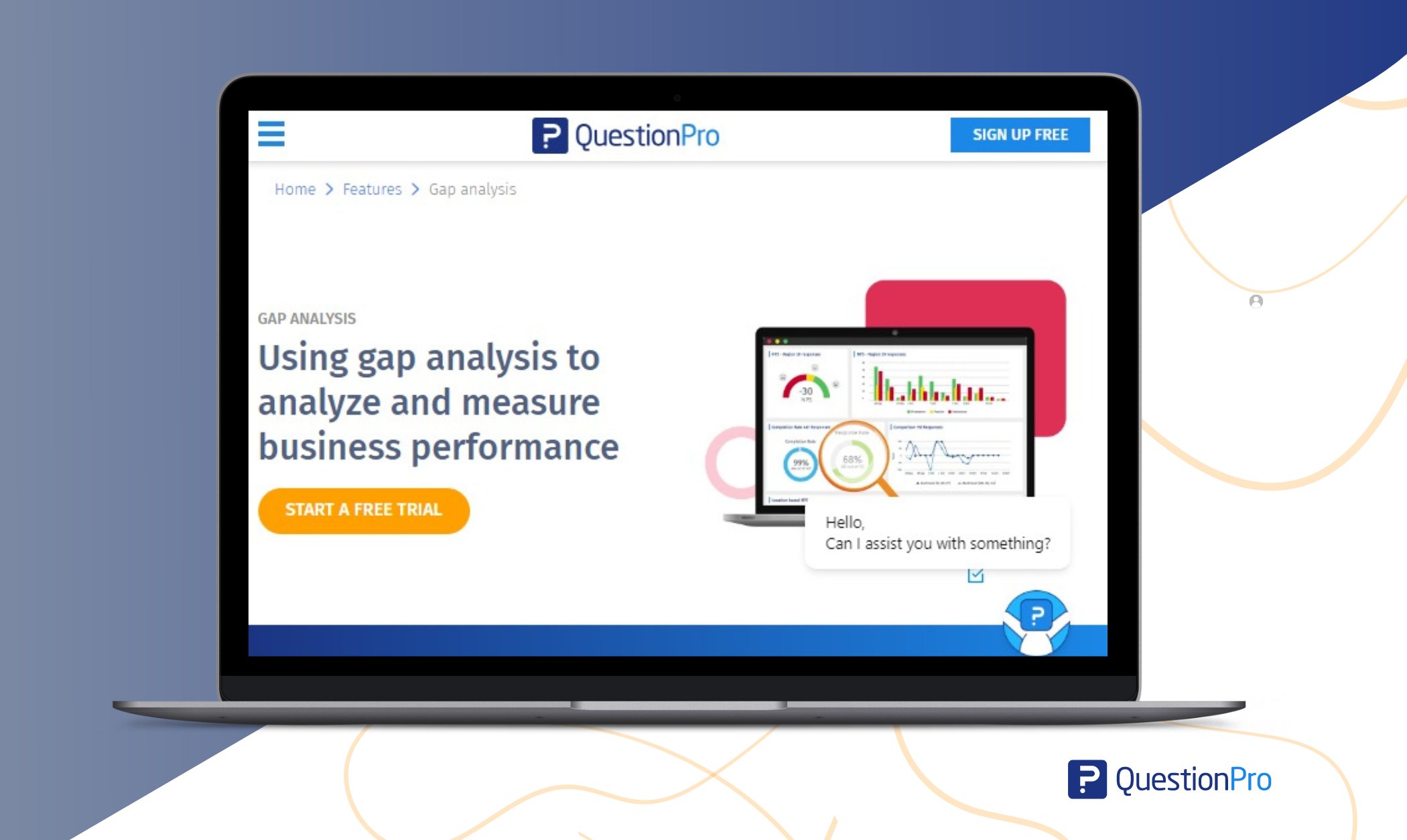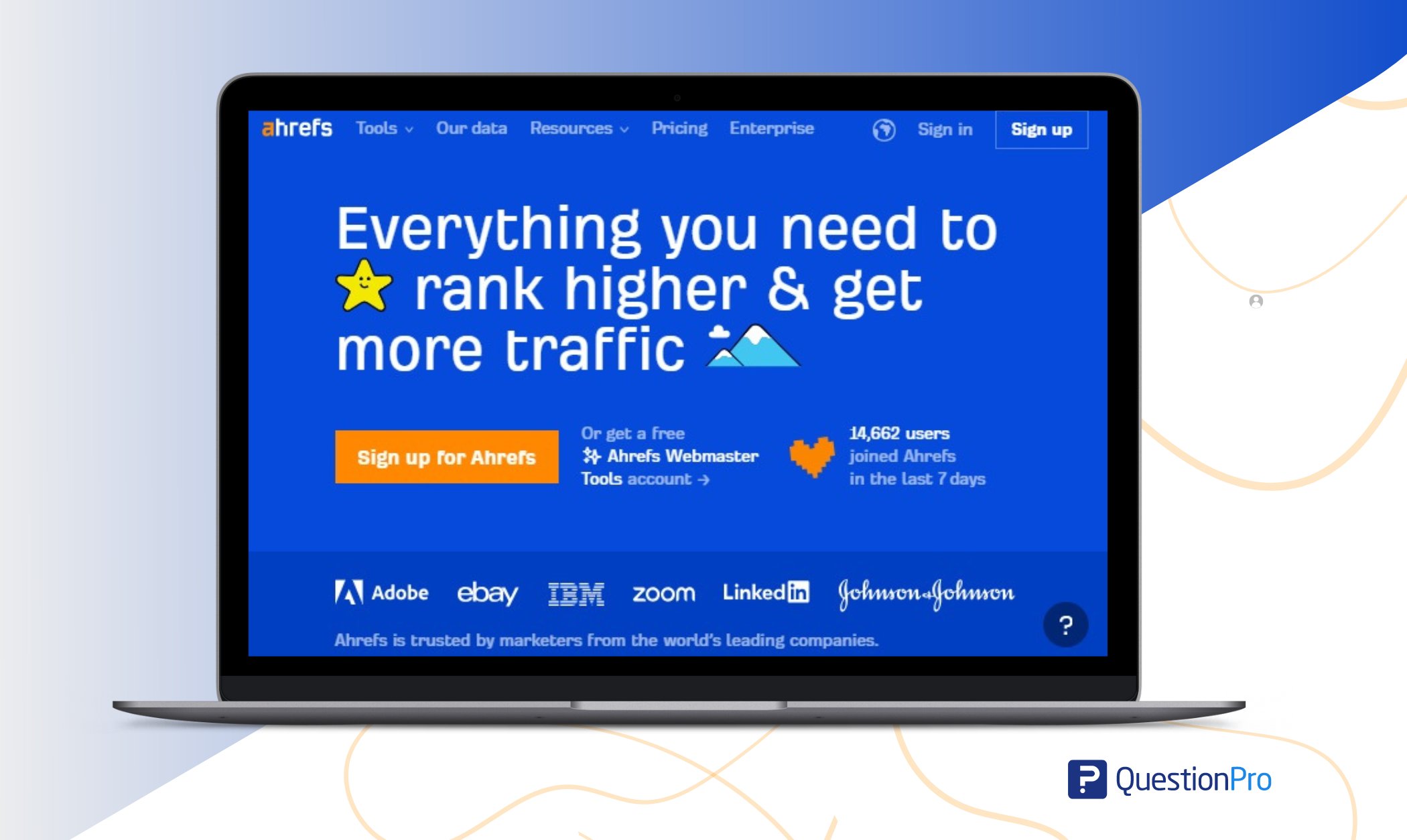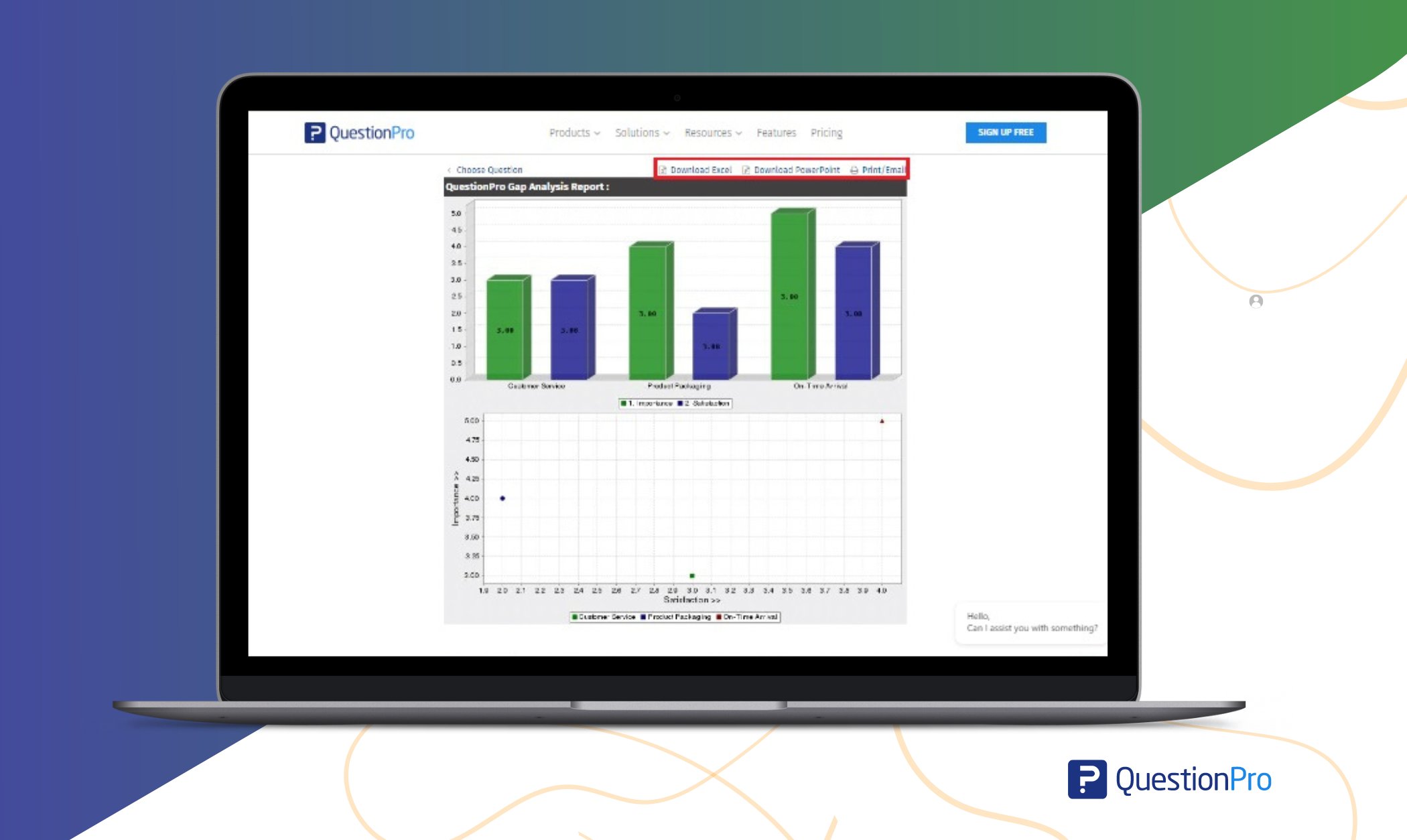
It’s an old problem in business: you want to grow your company and implement your strategy, but you don’t know where or how to invest. Does this sound familiar? If so, you should explore gap analysis tools.
To reach its full potential, an organization must make the best use of its resources, money, and technology. A gap analysis tool can help in this situation.
A gap analysis tool is also important for any organization’s performance. It lets companies see where they are now and where they want to be. With a gap analysis, companies can review their goals again to determine whether they are on the right track to achieving them.
In this blog, we will explore seven of the best gap analysis tools that can empower your business:
What is Gap Analysis?
Gap analysis is a strategic tool used in business and project management to assess the discrepancy or “gap” between current affairs and the desired state or goals. It involves comparing the current performance or status of an organization, process, product, or project with where it ideally should be or where the organization wants it to be in the future.
You need gap analysis to identify areas where there is a difference between the current situation and the desired outcome. By understanding these gaps, organizations can develop strategies to bridge them and more effectively achieve their objectives.
What are Gap Analysis Tools?
Gap analysis tools are methodologies or frameworks used to assess the discrepancies or “gaps” between a company’s current state and its desired future state. These tools help organizations identify gaps where improvements are needed to achieve their goals.
These tools have their own strengths and weaknesses, and the choice of tool depends on the specific needs and objectives of the organization. The ultimate goal of using these tools is to provide insights that can inform strategic decision-making and drive continuous improvement within the organization.
Importance of Gap Analysis Tools
Gap analysis tools facilitate a more in-depth analysis process and maximize its effectiveness. Their competitive advantage lies in several key aspects:
- Structured Analysis: They provide a systematic analysis framework, ensuring all the contributing factors are considered.
- Data Organization: These tools help gather, organize, and manage data efficiently, making it easier to identify performance gaps.
- Quantitative and Qualitative Insights: They support quantitative metrics and qualitative feedback, allowing for a comprehensive evaluation.
- Customization: Gap analysis tools can be tailored to the organization’s specific needs, ensuring relevance and accuracy.
- Collaboration: They facilitate collaboration among team members and stakeholders, promoting transparency and alignment.
- Action Planning: These tools assist in developing action plans and monitoring progress toward closing performance gaps.
- Documentation and Reporting: They generate reports and visualizations to communicate findings effectively, aiding decision-making and accountability.
Best 7 Gap Analysis Tools in 2025
Here, we’ll explore seven of the best gap analysis tools that can empower your business to thrive in today’s challenging environment.
1. QuestionPro

QuestionPro is a robust survey software that enables businesses to collect feedback, analyze data, and make informed decisions. While traditionally used for surveying, QuestionPro can also serve as a powerful tool for conducting gap analysis. By leveraging its diverse features, businesses can pinpoint gaps between current performance and desired outcomes, paving the way for strategic improvements.
Best Features:
- Customizable surveys.
- Multichannel distribution.
- Panel management.
- Extensive library of survey templates for quick deployment.
- Collaboration tools enable real-time teamwork and feedback exchange.
Pros:
- Advanced analytics providing real-time insights.
- Interactive reports with customizable dashboards.
- Seamless integration capabilities.
- Mobile compatibility for enhanced accessibility.
- Extensive library of survey templates.
- Robust data security features.
Cons:
- Some limitations in customization compared to other tools.
Pricing:
- QuestionPro offers a range of pricing plans, starting from a free plan with limited features and the Essential plan starts at $99 monthly.
2. SWOT analysis
SWOT analysis is a strategic planning tool used to evaluate the Strengths, Weaknesses, Opportunities, and Threats facing an organization or a specific project. It provides a comprehensive overview of internal and external factors impacting business objectives.
When applied as a gap analysis tool, SWOT helps businesses identify discrepancies between their current state and desired outcomes, paving the way for strategic decision-making and targeted improvements.
Best Features:
- Comprehensive analysis.
- Cost-effective methodology.
- Facilitates collaboration.
- Generates actionable insights.
- Supports continuous improvement initiatives.
- Widely adopted across industries for its effectiveness.
Pros:
- Strategic planning to capitalize on strengths and opportunities.
- Flexibility to adapt to various business contexts.
- Easy-to-understand framework for stakeholders.
- Quick assessment is suitable for time-sensitive situations.
- Promotes collaboration among team members.
Cons:
- Subjective assessments may lead to bias.
- Oversimplification of complex business dynamics.
- Lack of inherent prioritization of factors.
Pricing:
- Pricing is available upon request.
3. PERT
Program Evaluation and Review Technique (PERT) is a project management tool used to analyze and represent the tasks involved in completing a project. Although traditionally associated with project management, PERT can also serve as a powerful tool for conducting gap analysis, particularly in identifying discrepancies between current and desired project timelines or resource allocations.
Best Features:
- Visual representation.
- Resource allocation optimization.
- Flexibility to adapt to projects.
- Scenario analysis.
- Integration capabilities.
Pros:
- Identification of critical path for focused attention.
- Integration of risk management considerations.
- Collaboration among project stakeholders.
- Optimization tools for schedule and resource management.
- Performance metrics for evaluation and improvement.
Cons:
- Complexity, especially for projects with numerous tasks.
- Assumes unlimited resource availability.
Pricing:
- PERT analysis itself does not incur direct costs, but businesses may choose to use project management software or hire consultants with expertise in PERT analysis, incurring varying costs based on the chosen solution or service provider.
4. Ahref

Ahrefs is a comprehensive SEO toolset widely used by marketers, businesses, and SEO professionals to analyze website performance, conduct keyword research, and track backlinks. While primarily known for its SEO capabilities, Ahrefs can also serve as a powerful tool for conducting competitive gap analysis.
Best Features:
- Detailed backlink analysis.
- Advanced keyword research tools.
- Content exploration and analysis.
- Site audit for technical SEO issues.
- Competitive analysis tools.
Pros:
- Rank tracking for keyword performance.
- Link-building opportunity identification.
- SERP features analysis.
Cons:
- Data limitations based on the subscription plan.
- Primarily focused on SEO analysis.
Pricing:
- Ahrefs offers subscription plans available on request.
5. Fishbone diagram
The Fishbone diagram, also known as the Ishikawa diagram or Cause-and-Effect diagram, is a visual tool for identifying gaps and the root causes of a problem or phenomenon. While commonly applied in quality management and process improvement, the Fishbone diagram can also be an effective tool for gap analysis.
Best Features:
- Root cause identification.
- Facilitates brainstorming and collaboration.
- Adaptable to various contexts and industries.
- Supports problem-solving and decision-making.
- Encourages evidence-based analysis.
Pros:
- Visual representation of factors contributing to a problem.
- Structured framework for organizing causes into categories.
- The easy-to-understand format is accessible to all stakeholders.
- Supports continuous improvement efforts.
- Provides a visual record of the analysis process.
Cons:
- Interpretation challenges and potential disagreements among team members.
Pricing:
- Pricing is available upon request.
6. McKinsey 7-S model
The McKinsey 7-S Model is a strategic management framework developed by McKinsey & Company, a leading global management consulting firm. While originally designed for organizational analysis and change management, the McKinsey 7-S Model can also serve as a powerful tool for conducting gap analysis.
Best Features:
- Strategic alignment assessment.
- Focus on leadership style and employee engagement.
- Supports change management efforts.
- Provides a structured framework for analysis.
Pros:
- A holistic view of organizational effectiveness.
- Actionable insights for decision-making.
- Adaptability to various organizational contexts.
- Focus on leadership style and employee engagement.
- Supports change management efforts.
Cons:
- Complexity may be overwhelming for some organizations.
Pricing:
- The McKinsey 7-S Model itself does not fix direct costs, as it is a methodology rather than a software tool. However, businesses may incur costs if they choose to engage management consultants or organizational development experts to facilitate the gap analysis process using the model.
7. Lucidchart
Lucidchart is a cloud-based diagramming software that allows users to create flowcharts, diagrams, wireframes, and other visual representations. While not specifically designed as a gap analysis tool, Lucidchart’s versatility and collaborative features make it well-suited for conducting various types of analyses, including gap analysis.
Best Features:
- Drag-and-drop functionality.
- Real-time collaboration.
- Extensive library of a pre-designed gap analysis template.
- Revision history for tracking changes.
- Data imported from external sources.
Pros:
- Integration with other tools and platforms.
- Customization options for diagrams and shapes.
- Advanced security features for data protection.
- Presentation mode for communicating findings.
- Cloud-based accessibility for remote work.
Cons:
- The learning curve for mastering advanced features.
- Cost may be prohibitive for some users.
Pricing:
- Pricing is available upon request.
How to Conduct Gap Analysis With QuestionPro Survey Software?

Understanding the gaps between customer expectations and service delivery is crucial for success. Fortunately, QuestionPro’s market research survey software offers a powerful solution to effectively identify and address these gaps.
With its intuitive interface and innovative features, QuestionPro empowers businesses to conduct comprehensive gap analysis and drive continuous improvement. Let’s delve into the gap analysis process using QuestionPro survey software:
Accessing Gap Analysis
To initiate the gap analysis process, log in to your QuestionPro account and navigate to the “Surveys” section. Access the “Reports” tab and choose “Choice Modelling.” Here, you’ll find the option to select “GAP Analysis.”
Setting Up the Analysis
Once you’ve accessed the GAP Analysis feature, you’ll be prompted to select the relevant question from the drop-down menu. This question will serve as the basis for your analysis, allowing you to compare customer expectations with actual delivery.
Running the Analysis
QuestionPro’s GAP Analysis tool utilizes a side-by-side matrix question format called a multi-dimensional matrix. This format enables respondents to rate different attributes (such as Customer Service, On-Time Delivery, etc.) based on their importance and satisfaction levels.
Analyzing the Results
After collecting responses, QuestionPro provides robust analytical tools to interpret the data effectively. You can visualize the gaps between expectations and delivery, gaining valuable insights into areas for improvement.
Generating Reports
Once the analysis is complete, QuestionPro lets you download comprehensive reports in various formats, including Excel and PowerPoint. These reports can be shared with stakeholders, facilitating data-driven decision-making and action planning.
Benefits of Using QuestionPro for Gap Analysis:
- Efficiency: QuestionPro streamlines the entire gap analysis process, saving time and resources.
- Accuracy: With its advanced survey features, QuestionPro ensures accurate data collection and analysis.
- Customization: Businesses can tailor the analysis to their specific needs, ensuring relevance and depth.
- Collaboration: QuestionPro facilitates collaboration among team members, fostering a collaborative approach to addressing gaps.
- Actionable Insights: QuestionPro empowers businesses to make informed decisions and drive continuous improvement by uncovering areas for improvement.
Conclusion
Gap analysis tools are one of the most effective ways to find growth opportunities. They give your company a strategy based on data and industry standards.
Meeting people’s expectations is never easy, but the analysis helps you make a plan by taking things one step at a time. It is a thorough, step-by-step process that gives you a detailed action plan.
You can use it to fix a specific problem or just be proactive about making new strategies. QuestionPro has useful tools that can help you do a good gap analysis. By using its survey and research tools, businesses can find out where they can improve and develop plans to close the gaps in their performance.
QuestionPro’s easy-to-use interface and customizable features make it a complete solution for companies that want to improve their processes and grow. So sign up now to get your desired outcome!
Frequently Asked Questions (FAQ)
Typically, the tool gathers data through surveys, assessments, or data imports, then compares current metrics against predefined benchmarks or goals to highlight gaps.
Key features include customizable assessment templates, data visualization (charts, graphs), automated reporting, collaboration tools, and integration capabilities with other software.
Consider factors such as scalability, customization options, integration capabilities, ease of use, support services, and alignment with specific business needs and goals when selecting a tool.
Businesses of all sizes across various industries benefit, including project managers, quality assurance teams, compliance officers, and strategic planners seeking to improve efficiency and performance.







